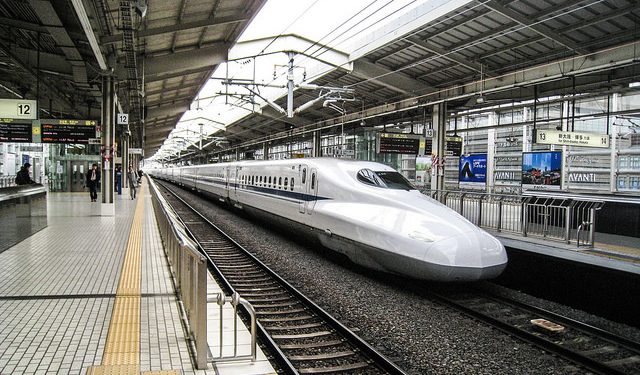Bullet Trains in India: Boon or Bane?

Introduction
In December of 2015, headlines were made when Prime Minister Narendra Modi announced that Japan would be introducing its world famous bullet trains in India, in an attempt to improve on the current rail system.
The bullet trains, known as Shinkansen, are built to reduce transit times as much as possible. Despite heavy passenger flows, these trains have an average delay of 36 seconds (according a 2012 report) including delays due to natural disasters. These trains have been integral to the transformation of Japan into an economic superpower.
About the Bullet Train Deal
India will pay Rs 98,000 crore for the 500km Shinkansen corridor from Mumbai-Ahmedabad, which will reduce the transit time between the two from eight hours to two hours.
Around a third of the Rs 98,000 crore is tied aid, so India will have to pay Rs 30,000 crore for goods bought from Japan.
Besides this deal, Japan and India will also be working together in other areas such as defence technology and agreeing on a memorandum of understanding on the peaceful use of nuclear energy.
Shinzo Abe and Narendra Modi also issued a joint statement on ‘India and Japan Vision 2025: Special Strategic and Global Partnership Working Together for Peace and Prosperity of the Indo-Pacific Region and the World’.
Pros
Prime Minister Narendra Modi plans to construct a diamond quadrilateral of bullet trains to connect four major cities: Mumbai, Delhi, Kolkata and Chennai as part of his ‘Smart Cities’ project.
Bullet trains have many advantages, the most prominent being that of speed. Bullet trains would save time and boost businesses between dynamic towns. A reduction in commuting time means more work gets done faster.
These trains are also comfortable and have excellent safety; in fact since the inception of these trains in Japan in 1964 there have been no fatalities. They would lessen congestion in cities such as Bangalore by making it easier to travel from small towns to major cities. This would reduce rural-urban migration which over populates urban areas.
Cons
The cost of construction of this project is huge and India will be paying off its debts for many years to come. Besides the initial costs, operation and maintenance costs will further burden the country. This will result in high fares, making bullet trains a thing of luxury rather than convenience. There will be also be unfair land acquisition to build these trains, displacing many people who might not be compensated fairly.
While the Modi government may be in favour of buying bullet train technology from Japan, a change in government could be a blow to this project. In 2005, Manmohan Singh had rejected Japan’s offer to build bullet trains in India, stating that such a project would only create a parallel rail system for the affluent.
Conclusion
Personally, I feel that the bullet trains are an unwise move. The main attraction of these trains seems to be speed, which is not a top priority for India right now. The Indian Railways would benefit far more from increased investment, which is much needed for its modernization.
Most of India’s population will not be able to afford to travel via these trains on a regular basis and will turn to local trains, which could really use funds to make trains safer and more comfortable.
What remains to be seen is whether or not this project stands the test of time and changing governments; whether the common man will find bullet trains becoming a crucial aspect of his daily life or a symbol of opulence.
[Image Attribute: James Byrum]




